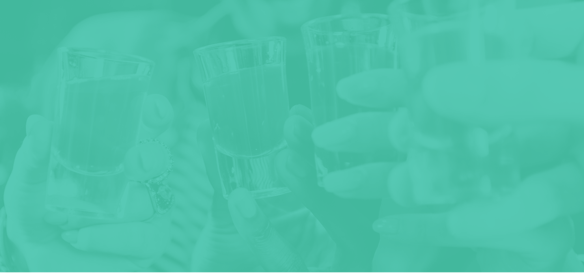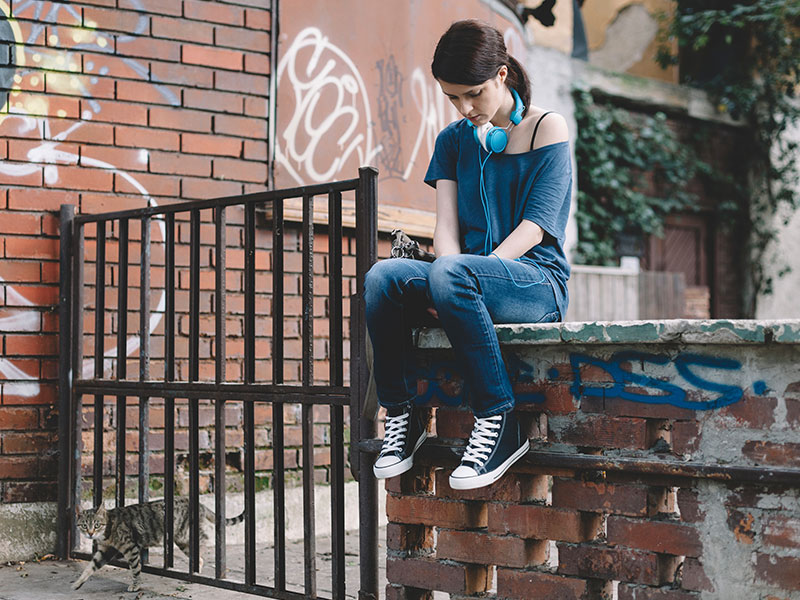Sneaking sips from a parent’s liquor cabinet and getting drunk for the first time are sometimes seen as rites of passage during adolescence. But the excitement of these experiments with alcohol can lead to tragic consequences. Underage drinking impacts a person’s likelihood of developing lifelong habits of alcohol abuse.
5,000
Approximate number of people die alcohol-related deaths every year
189,000
ER visits in 2010 involving alcohol use in people under 21
29
Percent of 12th-graders who engage in binge drinking
14
is the average age that people first try alcohol.
11
Percent of all alcohol in the U.S. is consumed by people aged 12 to 20
Underage Drinking Statistics
It can be difficult for teens to resist the allure of alcohol. Almost 2.3 million Americans between the ages of 12 and 17 report drinking alcohol each month, according to the latest National Survey on Drug Use and Health published in September 2017.
Approximately
2.3 million
people ages 12 to 17 drink alcohol each month.

About 6.7 million youth in the same age group say that they’ve tried alcohol at least once during their lifetime. That means more than 9 percent of American teens drink once a month and almost a third of U.S. adolescents have tried alcohol before they turn 18.
By 12th grade, 45 percent of teens say they’ve been drunk at least once in their life, according to the Monitoring the Future survey published in January 2018.
45 percent of 12th-graders have been drunk.
Source: Monitoring the Future survey
Teenage drinking statistics show that young people who drink often binge drink. In 2016, 1.2 million Americans between the ages of 12 and 17 reported binge drinking in the past month.
Underage drinking causes thousands of car accidents, arrests, hospital visits and premature deaths. It can lead to alcohol addiction, and it gets countless teens in trouble at school and with the law.
Although ad campaigns and nonprofit groups warn teens about the dangers of drinking alcohol, the intrigue of getting drunk continues to influence millions of curious young minds.
Find more alcohol facts and statistics
Looking for Help?
Let us help you find treatment specifically catered to teens.
Get Help Now
Reasons for Teen Drinking
For decades, alcohol use has been broadcast and encouraged by media and advertisements. Whether in beer commercials during football games or full-size ads on billboards and in magazines, teens are marketed alcohol. It’s also the most depicted drug on television shows.
For impressionable high-schoolers and middle-schoolers, exposure to alcohol ads makes the idea of drinking seem fun and exciting. The potential dangers of alcohol get overlooked.
The intrigue of breaking the rules may lead to teens to drink, and teens may think drinking alcohol makes them look cool or mature. At parties and other social drinking situations, teens may feel pressured to drink.

The stresses of teenage life also play a role in alcohol use. Teens may drink to cope with trouble at home, failing grades, anxiety and stress from new responsibilities. While some teens drink alcohol for fun, others view it as an escape from their problems. Using alcohol to relieve stress may increase a teen’s risk of developing alcohol problems.
Courtney Sexton, former host of the substance abuse prevention program Real Talk, shares a staggering statistic regarding teen alcohol use and alcoholism.
Health Risks of Teen Drinking
Drinking alcohol, especially in large amounts, presents even more risks to underage drinkers as it does to adults. Alcohol poisoning sends thousands of kids to the hospital each year. Operating a car after drinking creates a hazard for everyone on the road, sometimes resulting in tragedy. Additionally, getting caught drinking as a minor can land you in hot water with the law, your school and your family.
On top of all this, research shows a correlation between teenage drinking and diminished brain development. Teens suffering from alcoholism show a diminished capacity for memory, attention, focusing and exercising spatial skills.
- Increased risk of physical or sexual assault
- Engaging in risky sexual behaviors
- Getting involved with illicit drugs
- Increased risk of homicide or suicide
- Impaired judgment in public and at home
- Damaging reputation and opportunities
- Greater risk of blacking out or losing memory
One study by the National Institute on Alcohol Abuse and Alcoholism revealed that 47 percent of people who begin drinking before age 14 become alcohol dependent at some point in their lives, but only nine percent of those who wait until 21 develop a dependency.
Because of the risks associated teenage alcohol use, underage drinking is never OK. Parents and guardians should never supply teens with alcohol. Even if drinking is supervised, they may be setting them up for failure later in life. Giving them nonalcoholic beverages may also send the wrong message by implying that drinking isn’t a big deal.
Underage Drinking Warning Signs
With our busy lives and overlapping schedules, it’s easy to lose sight of your teen’s social life and to miss signs of problematic behavior. Young people often keep secrets and cover up their habits. But considering the risks involved with underage drinking and the ever-growing statistics of use among teens, it’s important as a parent to keep an eye out for telltale signs that alcohol may be affecting your child’s life.
- Falling grades or other problems in school
- Changing appearance and attitude
- Shifting friend groups
- Slurred speech or coordination problems
- The smell of alcohol on breath or clothes
- Becoming distant or detached from the family
For parents, balancing concern for your children and respect for their independence can be a tricky task. Nobody wants to accept the idea that their teen may be abusing alcohol or risk damaging their relationship to find out if they are.
If parents observe any warning signs for underage drinking, it may be time to approach them. Parents can address underage drinking by establishing clear rules, explaining the risks of underage drinking and following through with punishments for violating the rules. It might save their child’s life.
Learn more about how parents can address substance abuse
Preventing Underage Drinking
Once they make the personal decision to get better, teens with a drinking problem can receive help from a number of outlets. Each case is unique and, depending on the severity of the problem, may require a combination of support services.
School Counselors

It’s not easy for teens to admit they have a problem, let alone to an adult at their own school, but guidance counselors often form rewarding relationships with students that can positively influence their alcohol recovery. Regular meetings with a counselor can be an easy and free way for an underage person to discuss their drinking habits and hear honest and judgment-free advice as they work toward kicking the habit.
Support Groups
Millions of people with substance problems, spread all around the world, attend free meetings at community support groups. The largest and most well-known group, Alcoholics Anonymous, welcomes anyone dealing with alcohol abuse and walks them through the 12-Step recovery model. Attending meetings presents the opportunity to meet others struggling with addiction and form friendships that can last a lifetime. This camaraderie can be an invaluable alcoholism resource for teens whose troublesome drinking has damaged their self-esteem and their relationships with friends or family.
Treatment
When teenage drinking evolves into a serious problem, professional treatment may be the best hope for recovery. Residential treatment and rehab facilities, such as Next Generation Village, offer a safe place to stay as personalized treatment plans are developed and worked through by the well-trained staff. Many teen-focused treatment centers exist, in additional to the thousands of facilities designed for all ages.
A typical regimen at alcohol rehab involves a period of detox, followed by therapy and counseling for alcoholism that’s proven to mold and improve behaviors related to drinking. Several facilities offer outpatient treatment as well.
However they choose to get it, help is available for teens fighting an alcohol problem. The risks of abusing alcohol as a teen are far too great to ignore.
Medical Disclaimer: DrugRehab.com aims to improve the quality of life for people struggling with a substance use or mental health disorder with fact-based content about the nature of behavioral health conditions, treatment options and their related outcomes. We publish material that is researched, cited, edited and reviewed by licensed medical professionals. The information we provide is not intended to be a substitute for professional medical advice, diagnosis or treatment. It should not be used in place of the advice of your physician or other qualified healthcare provider.
View Sources
 Addiction
Addiction
 Treatment
Treatment
 Faith & Religion
Faith & Religion
 Active Recovery
Active Recovery
 Our Community
Our Community






